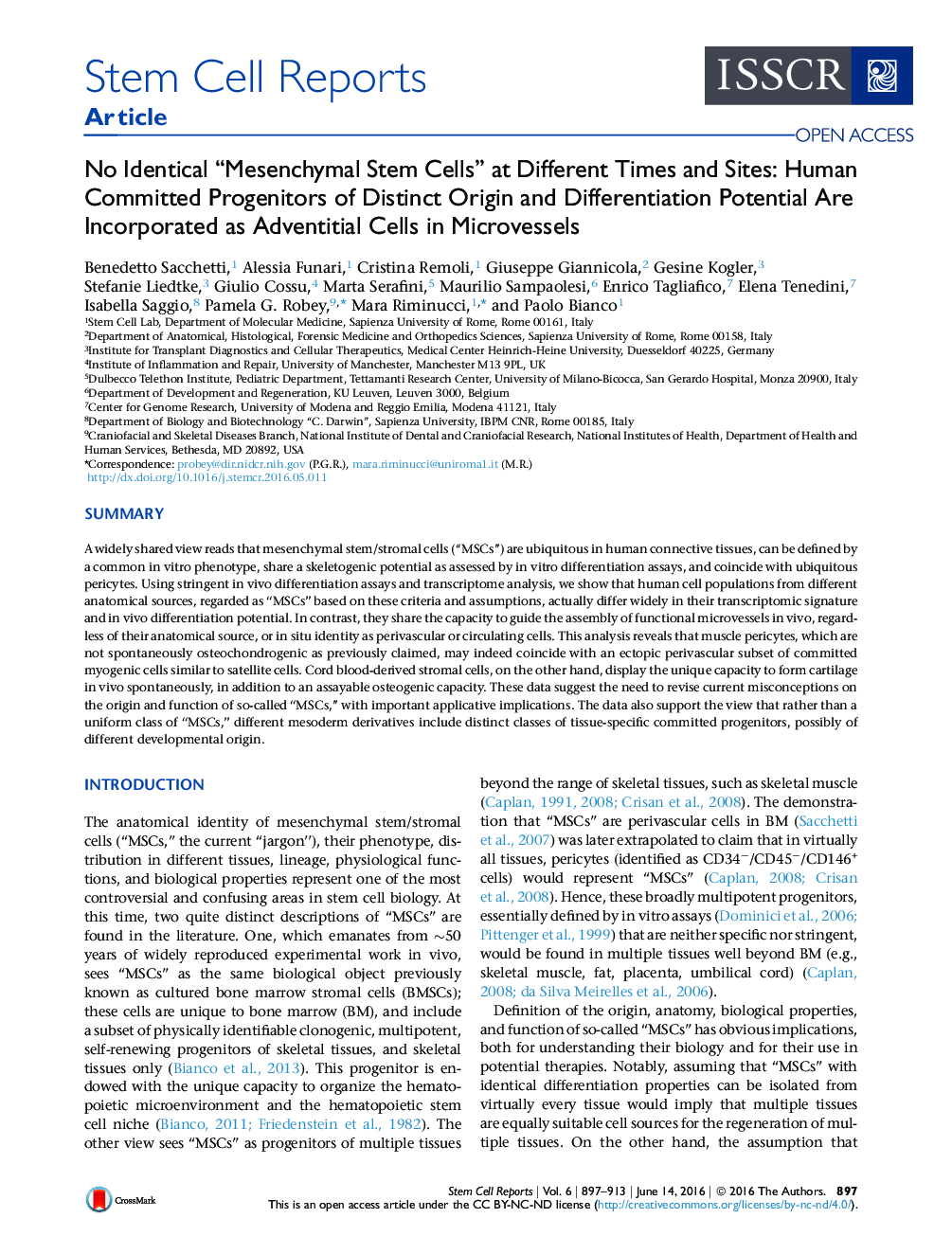| Article ID | Journal | Published Year | Pages | File Type |
|---|---|---|---|---|
| 2093263 | Stem Cell Reports | 2016 | 17 Pages |
•CD146+ “MSCs” from different tissues exhibit different transcriptional profiles•CD146+ “MSCs” from different tissues have different differentiation capacities•CD146+ “MSCs” from different tissues organize blood vessels and become pericytes
SummaryA widely shared view reads that mesenchymal stem/stromal cells (“MSCs”) are ubiquitous in human connective tissues, can be defined by a common in vitro phenotype, share a skeletogenic potential as assessed by in vitro differentiation assays, and coincide with ubiquitous pericytes. Using stringent in vivo differentiation assays and transcriptome analysis, we show that human cell populations from different anatomical sources, regarded as “MSCs” based on these criteria and assumptions, actually differ widely in their transcriptomic signature and in vivo differentiation potential. In contrast, they share the capacity to guide the assembly of functional microvessels in vivo, regardless of their anatomical source, or in situ identity as perivascular or circulating cells. This analysis reveals that muscle pericytes, which are not spontaneously osteochondrogenic as previously claimed, may indeed coincide with an ectopic perivascular subset of committed myogenic cells similar to satellite cells. Cord blood-derived stromal cells, on the other hand, display the unique capacity to form cartilage in vivo spontaneously, in addition to an assayable osteogenic capacity. These data suggest the need to revise current misconceptions on the origin and function of so-called “MSCs,” with important applicative implications. The data also support the view that rather than a uniform class of “MSCs,” different mesoderm derivatives include distinct classes of tissue-specific committed progenitors, possibly of different developmental origin.
